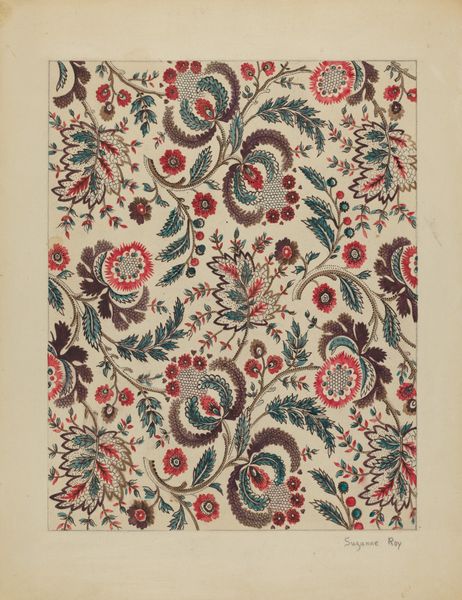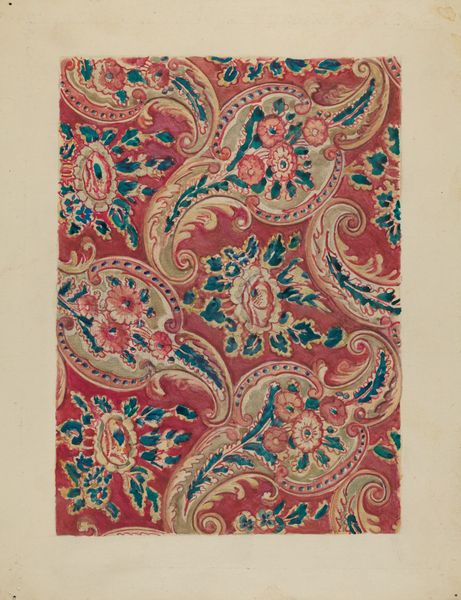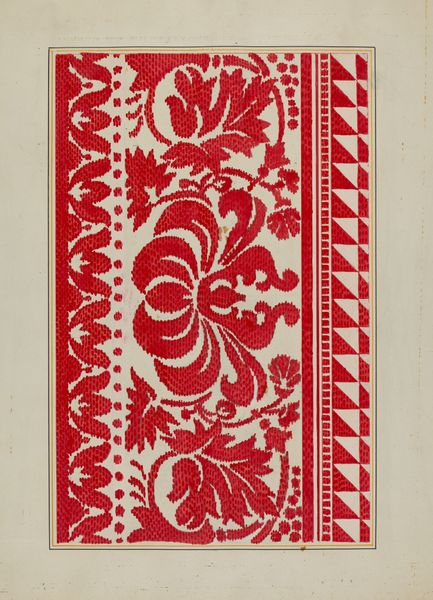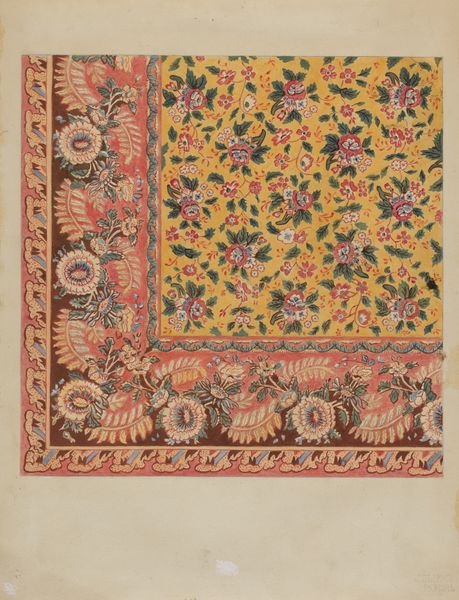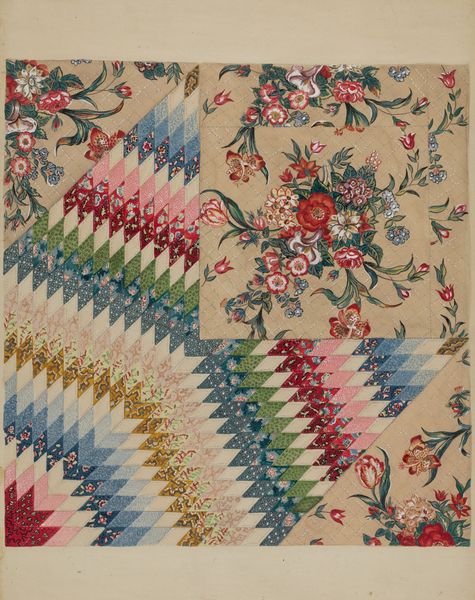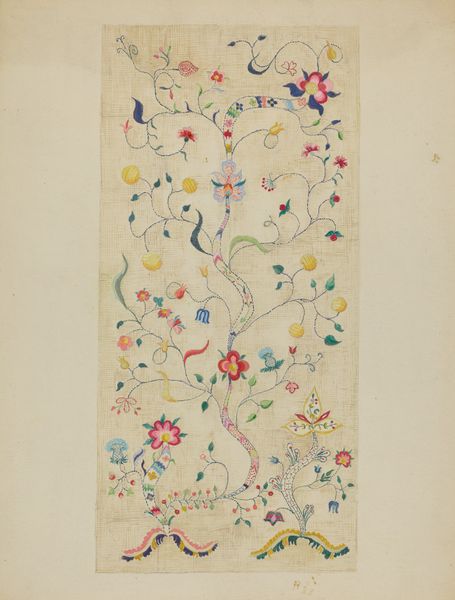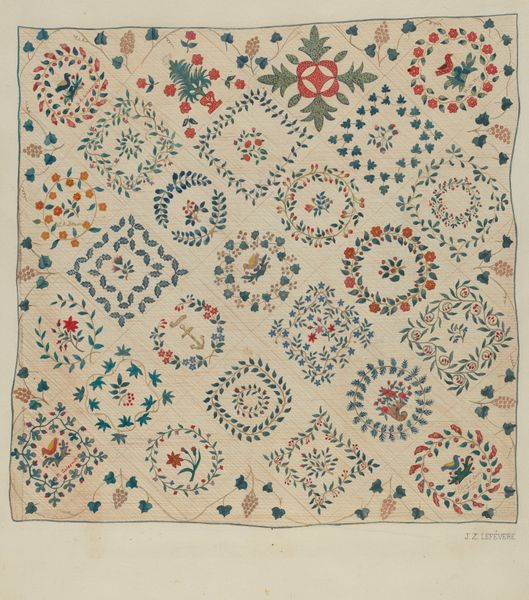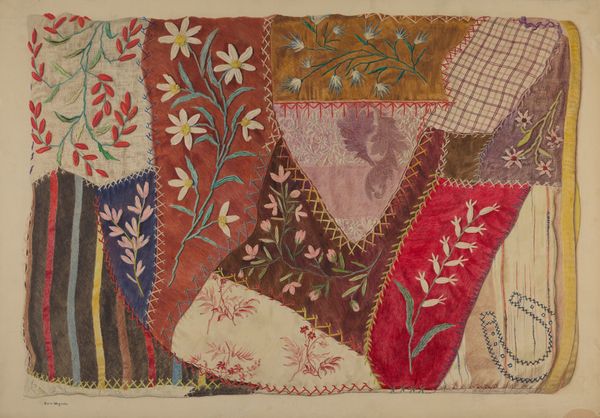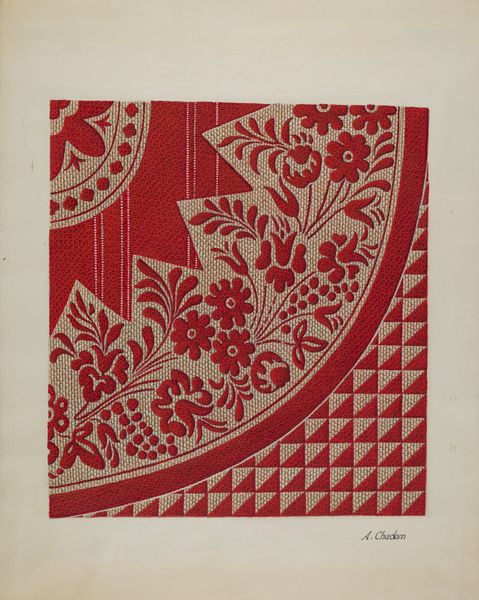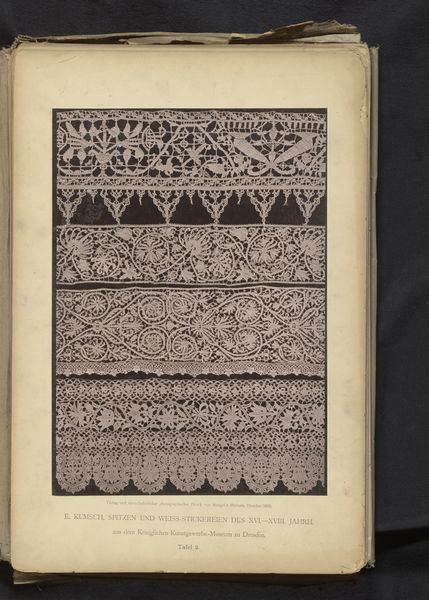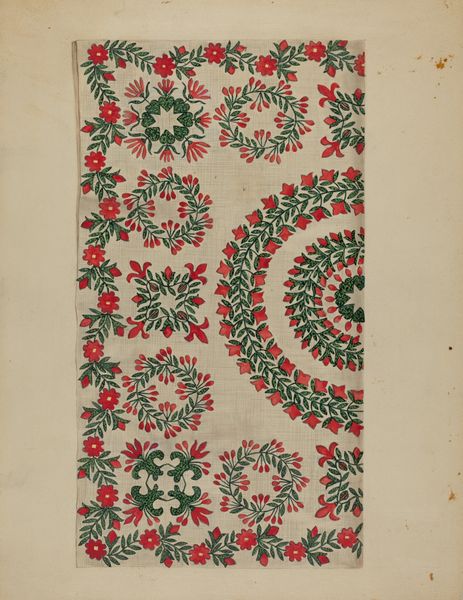
fibre-art, textile
#
fibre-art
#
textile
#
geometric pattern
#
folk-art
#
organic pattern
#
geometric
Dimensions: overall: 29.7 x 22.9 cm (11 11/16 x 9 in.) Original IAD Object: 93" square
Copyright: National Gallery of Art: CC0 1.0
Curator: Welcome. Today, we're exploring Mary Berner’s "Patchwork and Applique Quilt," created between 1935 and 1942, an exemplary piece of textile art combining drawing and mixed media. Editor: Immediately, I’m struck by its duality; one half vibrant and angular, the other soft and floral. It feels like two distinct narratives stitched together. Curator: Indeed. On one side, we see the precision of geometric patterns. These repeating forms showcase a mastery of composition and a clear understanding of how shape and color interact to create visual interest. Editor: That geometric side also feels grounded, almost representative of the practical, rooted labor typically associated with women’s work during the Depression era. The quilt itself becomes a symbolic testament to the need to provide and create warmth, safety and security through harsh economic times. Curator: It’s interesting to note the contrasting organic forms of the floral designs occupying the rest of the quilt. Note how Berner uses appliqué to bring these flowers to life, creating movement and flow across the surface. This pushes the artwork beyond mere functionality. Editor: Absolutely. The floral side, so detailed and seemingly whimsical, counters the starkness of the geometric forms. But, even in its floral arrangements, you can detect hints of rigidity, mirroring an idealized notion of feminine expression of the era. Curator: The tension between these halves makes the piece particularly compelling. One can even analyze the colour schemes within each section to uncover further structural contrasts and compositional techniques utilized by Berner. Editor: The entire piece certainly speaks volumes about the tensions between duty, artistic expression, social and personal identities available for a woman artist living and working in mid-20th century America. It urges us to reconsider our preconceived ideas about craft, and about folk-art traditions broadly. Curator: I agree. This offers an opportunity to truly explore the artistry and deliberate formal construction involved. Editor: This quilt prompts questions around domesticity and the role of art as both a form of resistance and acceptance to prevailing societal norms. Thank you for considering these historical threads.
Comments
No comments
Be the first to comment and join the conversation on the ultimate creative platform.
